| |
Bionda dell'Adamello (foto Milone, Archivio RARE 2007)
Local Italian Alpine Goats: the Bionda dell’Adamello
Luigi Andrea Brambilla
Laura Milone
Introduction
The livestock sector connected with goat rearing in the Italian Alpine zone has been growing for some years (since the 1990's) and is important for various reasons (economically, culturally and organisationally). However, it has been observed that particularly the economic aspects of starting new breeding farms create problems because, in most cases, these new businesses completely disregard the areas in which they are located. The breeds chosen are selected ones, while feed is often based on supplies from outside the business. Therefore the type of farming is more intensive than pastoral, even though the latter ensures better sustainability in mountainous regions, using local resources and goat breeds more efficiently.
At present in northern Italy there are 12 official native goat breeds that are on the verge of extinction and under EU protection (EU Reg. 1698/2005) because they number below 10,000: the Valdostana (Val D'Aosta Region), Sempione - Vallesana - Roccaverano (Piedmont Region), Bionda dell'Adamello - Frisa Valtellinese - Orobica di Val Gerola - Verzaschese - Lariana (Lombardy), Mochena (Autonomous Province of Trento), Passiria (Autonomous Province of Bolzano) and Istriana (Friuli Region) Goats. In addition to this important heritage there is the Common Alpine Goat, which is not threatened with extinction (numbering around 100,000) and is found throughout the Alpine and pre-Alpine zones of Italy. This breed is the ancestor of all existing ones (native and selected of Alpine origin), and the main source of this species' biodiversity in the Alps.
*Luigi Andrea Brambilla, an expert on issues relating to the protection of local Italian Alpine goat breeds, R.A.R.E. (Native Breeds Risking Extinction), Ager Technician (Agricoltura e Ricerca, Milan). luigi.brambi@tin.it
Laura Milone, R.A.R.E. referring agent in Trento Province for the Bionda dell'Adamello goat. www.associazionerare.it, info@associazionerare.it
The Bionda dell'Adamello
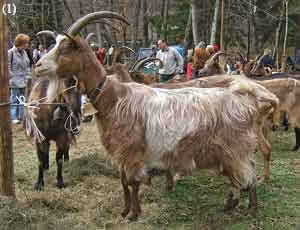 The Bionda goat has been the most successful breed recently in terms of numerical growth (rising from 100 in 1995 to 4,500 in 2007). The highest concentration of breeders and goats is certainly found in the Valle Camonica (Province of Brescia, Lombardy) and especially in the Valle Savoire (one of the Adamello's points of entry to the massif). It was right here in this small valley, at the beginning of the last century, that this breed started up before spreading to the surrounding valleys. Today, following a long period of crisis lasting from the 1950s to the 1980s, during which it risked extinction, the Bionda goat is being bred in four provinces of the Lombardy Region (Brescia, Lecco, Bergamo and Como) and in Trentino. The Bionda goat has been the most successful breed recently in terms of numerical growth (rising from 100 in 1995 to 4,500 in 2007). The highest concentration of breeders and goats is certainly found in the Valle Camonica (Province of Brescia, Lombardy) and especially in the Valle Savoire (one of the Adamello's points of entry to the massif). It was right here in this small valley, at the beginning of the last century, that this breed started up before spreading to the surrounding valleys. Today, following a long period of crisis lasting from the 1950s to the 1980s, during which it risked extinction, the Bionda goat is being bred in four provinces of the Lombardy Region (Brescia, Lecco, Bergamo and Como) and in Trentino.
The most suitable and most commonly used type of farming for this breed is a traditional-pastoral one: animals are kept in sheds, some still made of stone, in the valley bottoms from November to March. This is the time for gestation, birth and care of the kids. Then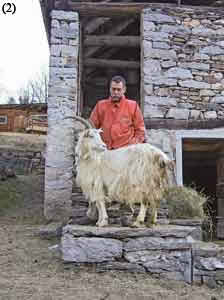 during the spring and summer months they are taken to graze up to an altitude of 2,500 m above sea level when the weather is good. during the spring and summer months they are taken to graze up to an altitude of 2,500 m above sea level when the weather is good.
This breed's appearance is notable mainly for its hair and coat. The former should be fine and long over the whole body. The coat should be light brown (known as "blond" locally) with regular patches of white on the head, legs, rear and ventral areas.
Farming of the Bionda goat provides both milk for making cheese, and meat which comes from the slaughter of kids and also animals at the end of their career.
The two typical cheeses produced are Fatulì and Mascarpì. The first is cheese is smoked, while the second is a kind of ricotta. This animal produces on average 350 kg of milk and is in line with the pastoral farming system.
The Department of Veterinary Medicine for food safety at the University of Milan made several important discoveries during its recently conducted innovative study of the local goat breeds, aimed at finding out the "cultural value" of the Bionda breed to the area in which it is farmed.
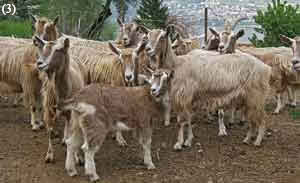 Although this breed has had recent successes which augur well for its future, there exist real dangers that might compromise the work done up to now. Its similarities with the Swiss Toggenburg selected breed, with which it has no territorial or cultural connections, suggests that the use of reproducers of the foreign breed might encourage more farming of the Bionda dell'Adamello goat. However, there is a real danger that the native breed's hard-won original identity, Although this breed has had recent successes which augur well for its future, there exist real dangers that might compromise the work done up to now. Its similarities with the Swiss Toggenburg selected breed, with which it has no territorial or cultural connections, suggests that the use of reproducers of the foreign breed might encourage more farming of the Bionda dell'Adamello goat. However, there is a real danger that the native breed's hard-won original identity,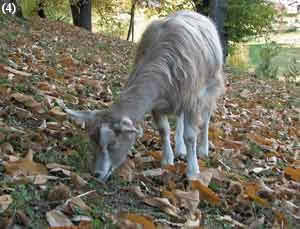 officially recognised with the establishment of the Herd Book, will be lost. No less "devastating" would be any attempt to encourage the spread of farming systems that are foreign to this breed and the Alpineregion in general (intensive systems) on the grounds that it would increase production of the typical Fatulì cheese, up to now of pristine "cultural identity". All this would be in aid of a type of "progress" which has already been proven wrong for other livestock breeds, aimed at encouraging farming activities already strongly favoured in environmental terms (artificial control of factors for breeding: climate, food etc.), uprooting and further limiting pastoral farming which is already facing great difficulties. officially recognised with the establishment of the Herd Book, will be lost. No less "devastating" would be any attempt to encourage the spread of farming systems that are foreign to this breed and the Alpineregion in general (intensive systems) on the grounds that it would increase production of the typical Fatulì cheese, up to now of pristine "cultural identity". All this would be in aid of a type of "progress" which has already been proven wrong for other livestock breeds, aimed at encouraging farming activities already strongly favoured in environmental terms (artificial control of factors for breeding: climate, food etc.), uprooting and further limiting pastoral farming which is already facing great difficulties.
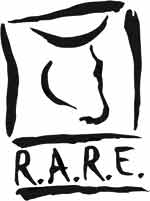 The R.A.R.E. Association - Native Breeds Threatened with Extinction The R.A.R.E. Association - Native Breeds Threatened with Extinction
R.A.R.E. is the first Italian association to work for the protection, recovery and improvement of native livestock breeds and populations under threat of extinction. Started in 2002, it coordinates and promotes conservation of breeds and develops their scientific, cultural, social and environmental roles. It encourages educational initiatives taken on the theme of protection of biodiversity, and obtains and spreads information on the status of livestock breeds.
R.A.R.E. has committed itself to becoming the reference point in Italy for all those who believe in defending animal biodiversity.
For more information on the Association, breeds and projects, see the website www.associazionerare.it
(1) Capra Alpina Comune - Valle Ossola (foto Brambilla, Archivio RARE 2005)
(2) Capra Sempione - Valle Antigorio (foto Brambilla, Archivio Ager 2008)
(3) Gregge di capre Bionda dell'Adamello (foto Brambilla, Archivio RARE 2007)
(4) Castagneto (foto Milone, Archivio RARE 2006)
|
|